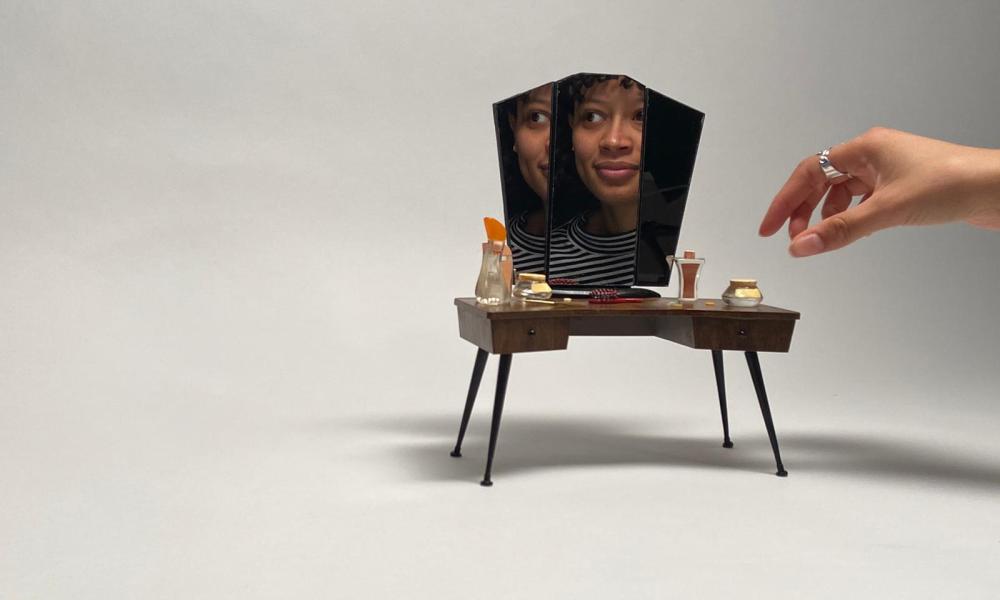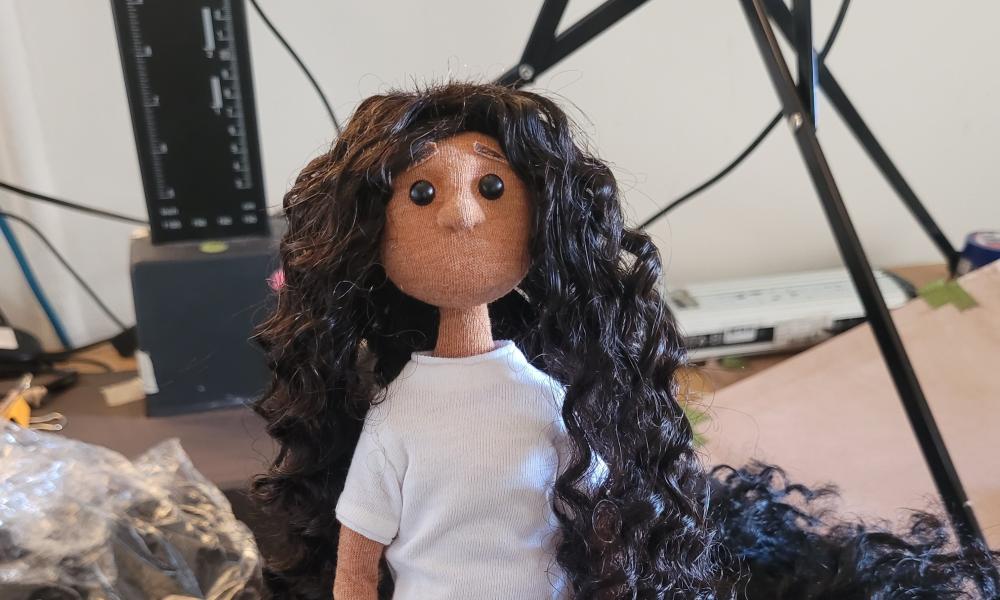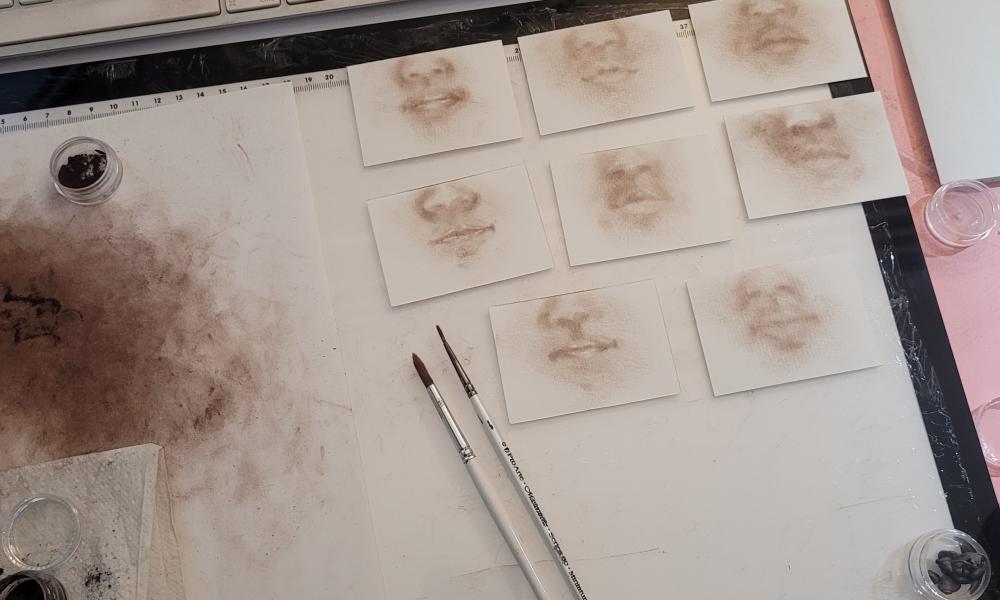Reclaiming Narratives Through Animation
For Black History Month 2024, which this year is themed ‘Reclaiming Narratives’, we caught up with Aliyah Harfoot whose graduation animation Liminal Roots provides a powerful testament to the theme. Aliyah, who graduated from the National Film and Television School (NFTS) Directing Animation MA in February, used this opportunity at the School to explore questions of identity, belonging and self-discovery through the lens of her own experiences as a mixed-race individual navigating the complex terrain between two cultures.
What are the key themes behind Liminal Roots and why did you want to tell this story?
The main theme of Liminal Roots is identity. For me, my identity has always been something that I have struggled with, especially growing up mixed race without a connection to one side of my family. As I’ve grown older and had more conversations over race and identity I’ve come to realise that many people share or can relate to the experiences that I’ve had growing up. Being in this liminal space between two ethnicities and cultures, I think it’s so important to share these experiences. Even if only a handful of people can relate, it’s reassuring to know that we’re not alone. I wanted this film to be specific to my experience, allowing people who may not know what it’s like, to gain a sense of the depth of the emotions that come along with this internal struggle.
The film uses different mediums and styles of animation. What was the decision process behind how each element in the film would be represented?
Stop motion has always been my go to, it’s so tactile and I love working with my hands.
Experimenting and trying new techniques is a key part of my process. Finding the right techniques for this film was important. If you’re using animation as a medium it should serve your story and add to it. I was experimenting throughout to discover what would work best for this story.
The puppets were one of the first things I designed and the students on the NFTS Model Making Diploma brought them to life, along with all of the props designed by our production designer Kätlin Loomets. I wanted the puppets to have really simple designs with no mouths, so that they would communicate purely through body language. I wanted the acting in the film to be very subtle and delicate, which I realised was a bit more difficult to do with puppets. A lot of acting happens in the face and hands and I was missing this with the puppets.
Through experimentation with different mediums I discovered a pigment powder that had a very soft effect and it worked well to convey more nuanced emotions. Because of the nature of the two mediums, the puppets and props became representative of the real world and memory and the drawn elements represented the emotional state of the character.
What were the surprising challenges that you came across during the making of Liminal Roots?
Scheduling the project was something that was quite challenging. There was a learning curve of figuring out how to have a project that was very free and open for experimentation but also keeping to deadlines and moving forward with the film.
I wasn’t working in a traditional way and so had to find ways of working that benefitted the film and helped communicate abstract ideas to the rest of the team. Instead of a script we created an emotional timeline. Instead of an animatic I drew images that were representative of the emotional beats and we put that in a timeline.
Collaboration is key at the NFTS. What were some of the ways your collaborations with your team at the School shaped the film?
Sound and music plays such a huge role in this film, the collaborations with our sound designer Omar and composer Rotem Frimer were essential in creating the tone and atmosphere of the film. I wanted them both to have their own creative input, they are experts in their own craft and were able to bring so much life to the film.
I knew the film wouldn't have dialogue very early on, so the sound would be very important.
Our process was quite intuitive. We started with an emotional timeline full of key words, from this Rotem created a temp piece to guide us through the journey.
I also used this as a base to animate to, it helped inform if we needed some lighter or darker moments. Once we had enough animation, Leif Phelps our editor cut together a clear visual narrative. While I continued to animate, our sound designer began to create a very clear sonic language that elevated and emphasised the characters emotions through her journey.
The theme for this year's Black History Month is ‘Reclaiming Narratives’. In what way do you feel film and animation can play a part in this?
Creating this film has served as a form of self expression, it’s a representation of my lived experience. It’s a film that visually explores complex emotions and themes without needing to be explicit in its context. It’s accessible for everyone but it can mean a lot more to some.
What would you say to your past self, and other aspiring filmmakers thinking of taking their next step towards a career in film or TV or applying for a course at the NFTS?
Failure and rejection are a part of the process, it’s so important not to let it knock your confidence. Learning to fail is one of the best ways you can learn and improve. It allows you to try new things, experiment and not be afraid of the outcome. The NFTS is the perfect place to try new things, fail and discover things you may have never tried.
Be open to collaboration and allow people to bring their own skills and ideas, it will help you develop your ideas and bring so much richness to your films.






